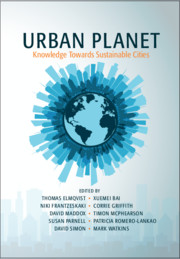The Mapuche nation has a philosophical and spiritual structure that draws on the relationship with Pu Newen forces of nature and various vital energies, which are telling us how the art of living can bring us closer to harmony. For thousands of years, our people developed their farms, their community, and their territorial organization, incorporating certain sacred spaces as the central driving force of life. At the core, this implies respect for the habitat of the watersheds, rivers, lakes, volcanoes, and land. We did not invade these spaces. We lived next to them, but not on top of them, so to speak. We understood that the territorial organization grew from the need to respect the other elements that lived there.
From this notion of “co-living,” megacities would be unthinkable. However, the human crisis and global collapse facing the planet, along with the destabilizing impact of climate change, to which urbanization has significantly contributed, forces us to look for possible alternatives, both in the near and midterm, to set the stage for guaranteeing the continuation of human life on the planet.
To develop realistic strategies which might give concrete results, we have to think of a new urban design, which necessarily has to challenge and deconstruct the logic of capitalist development – which accumulates and concentrates resources for only a few. To do this, we must make progress in dismantling large estates, where huge tracts of land are owned by one person, family, or company, for speculation or exploitation, damaging mother earth, the Mapu – polluting and eroding her, killing her slowly to produce large business. While these companies destroy the countryside, many people are displaced and induced to settle in the cities in search of an opportunity to improve their lives. There they only find more misery and marginalization, which ultimately detracts from their humanity, stunting minds and spirits; in the end, they become Homo economicus, a kind of objectified human, an economic tool.
Poverty, misery, and violence generated by inequality are the constitutive elements of urban cannibalism. The megacities, such as we have conceived them, should disappear, transformed into small cities that are interconnected and coordinated with food production areas, natural medicine, and renewable alternative energy.
The spirituality of Indigenous peoples should not only be respected but also should serve as inspiration for these new urban structures. Population health is intrinsically linked to harmonious relationships with nature and, primarily, with the perceptible forces that interact in our territories. Sacred spaces are energetic centers in which forces and forms of life are harmonized. They must not be invaded by sports stadiums, buildings, or casinos, occurrences which have led to resistance and struggle of First Nations in various countries and cities, and which clearly violate the spiritual rights of the people.
The new ecological cities should redraw the maps of the persistent geopolitics of nations, doing away with the geographical boundaries of death, division, and racism introduced by nation states. It is irresponsible to think of the design of a new ecological urban model without proposing the construction of a new paradigm for civilizations, one that recovers the sense of reciprocity between people and nature. In a new humanity, a new design – and not only an urban, but a global peoples’ movement – resistance and struggle will be the makers of this revolution of thought. It must emanate from the identity of ancestral lands and recovery of true spirituality that prioritizes the heart above reason, and which does not look for the base benefit of anthropocentric forces, but rather for the construction of a circular order, harmonized, horizontal, and reciprocal.
Humans are not an abstraction. We are part of nature. We say we are Mapuche: people of the land. The land is us; it is our identity-space. Each element of our culture is the expression of each element of nature. When an element of nature disappears, an element of our culture also disappears. If rivers are murdered with dams, the sacred song of the rivers is reduced to a sick silence, like standing water that pollutes our spirit. To keep us flowing as with the energy of flowing water, let us be guardians and respectful of it.
The economic crisis, the climate crisis, the humanitarian crisis are all symptoms of a single major disease: the matrix of Western civilization, the dominant culture based on anthropocentrism, materialism, individualism, patriarchy, and racism. So far, it has never been challenged by the great revolutionary movements of the world, which have only questioned social inequality, reducing the problem to a question of class struggle. We must broaden our vision, deepen our analysis, and develop new tools with innovative theoretical frameworks that allow us to approach multiple approaches to this great problem.



